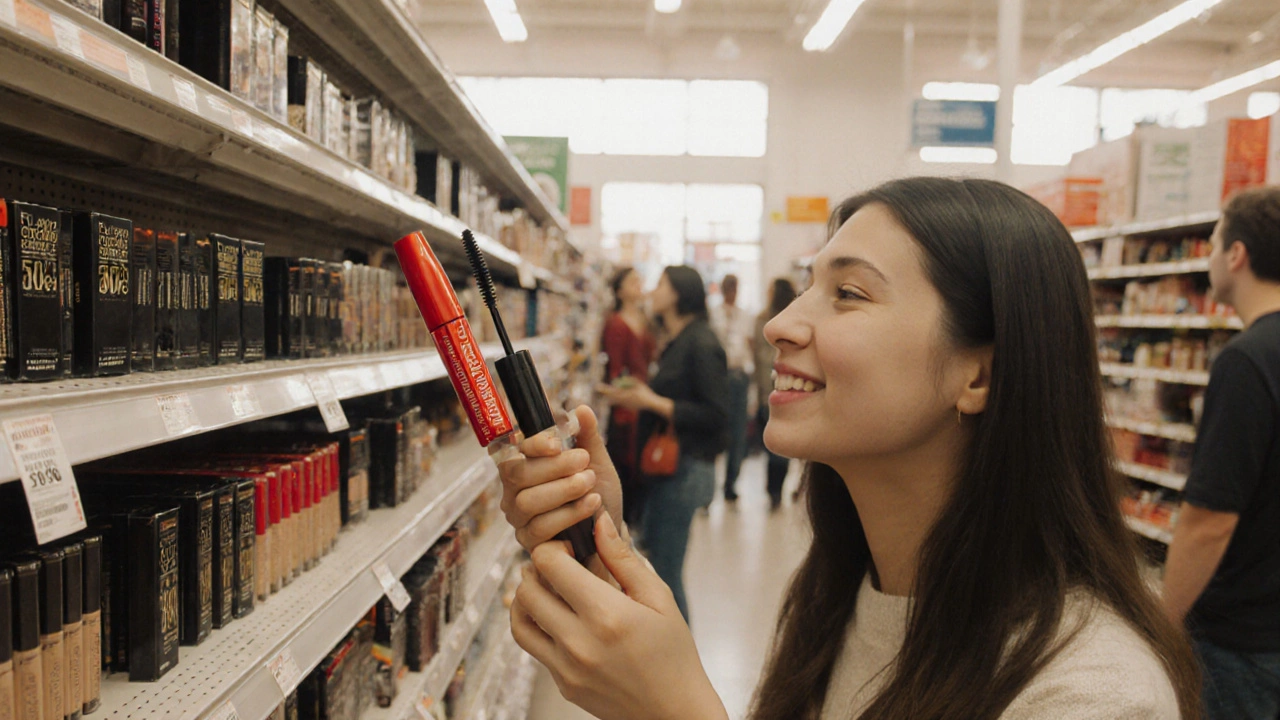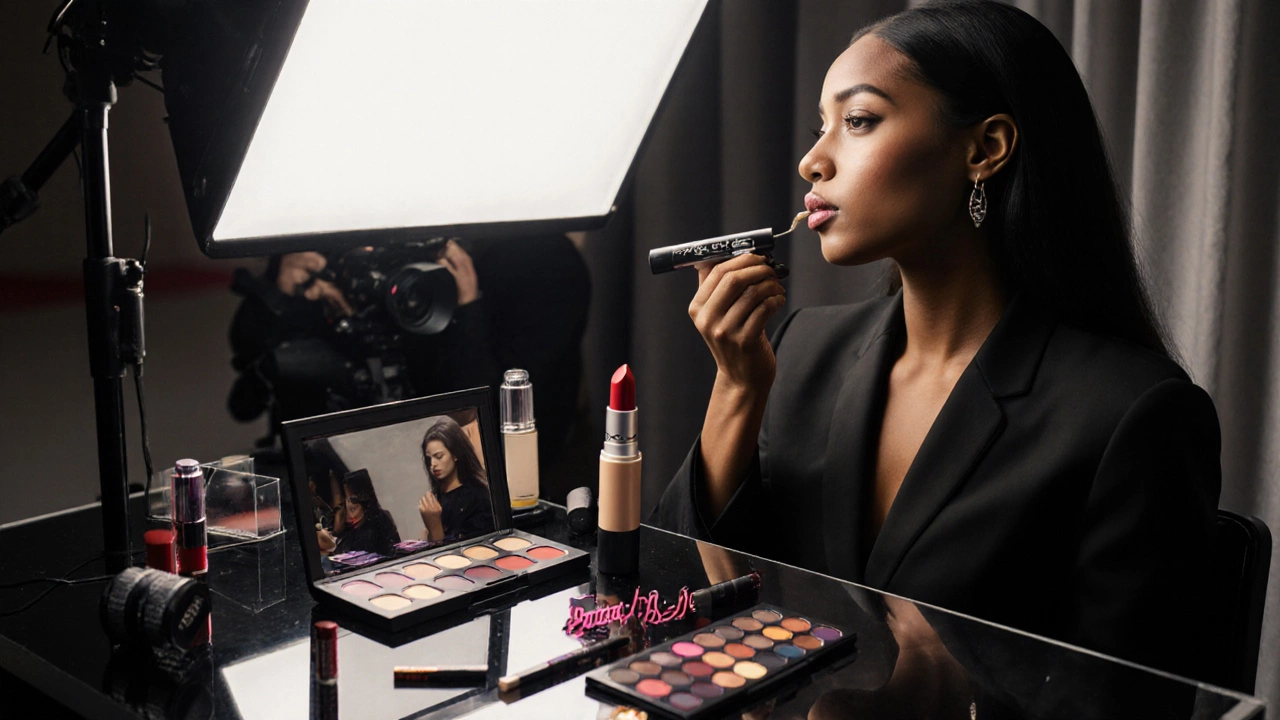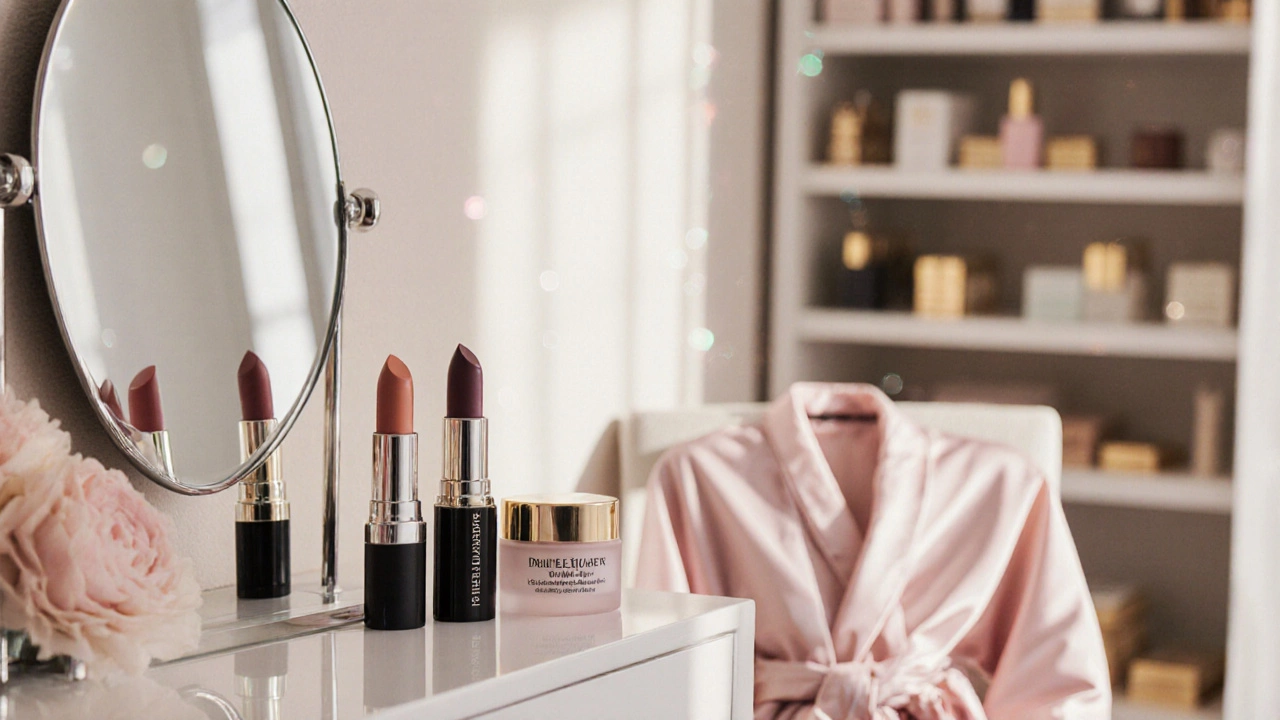
Cosmetic Brand Finder
Find your perfect makeup brand match
Answer these questions to get personalized recommendations based on your skin type, budget, and beauty goals.
Your Perfect Match
Maybelline
The reliable drugstore favorite for everyday wear
MAC Cosmetics
The professional choice for pigment and longevity
Drunk Elephant
The clean beauty option for sensitive skin
Why these brands?
Based on your preferences, these brands offer the best combination of performance, value, and features for your needs.
If you’ve ever walked down the beauty aisle at Target or scrolled through Instagram ads, you’ve seen them: sleek packaging, bold logos, and influencers raving about products that promise flawless skin or the perfect lip color. But not all cosmetic brands are created equal. In the USA, a handful of names dominate shelves, social media, and consumer loyalty. These aren’t just trendy names-they’ve built empires by understanding what American consumers actually want.
Maybelline: The People’s Makeup Brand
Maybelline has been around since 1915, and it’s still the most sold makeup brand in the U.S. Why? Price, accessibility, and results. You can find Maybelline in drugstores, supermarkets, and online for under $10. Their Falsies mascara alone sells over 100 million tubes globally each year. It’s not luxury-it’s reliable. Millions of people rely on Maybelline for everyday wear, from high schoolers to working moms. It doesn’t need hype. It just works.
Estée Lauder: The Luxury Standard
When someone says "high-end makeup," Estée Lauder is often the first name that comes to mind. Founded in 1946, this brand built its reputation on skincare-infused makeup and clinical-grade formulas. Their Advanced Night Repair serum is one of the best-selling skincare products in the world, and it’s the reason so many people trust their foundation. Estée Lauder owns a whole family of brands-Clinique, MAC, Tom Ford Beauty, and Aramis-but the flagship name still carries weight. It’s the brand women buy when they want to treat themselves, and it’s a staple in department stores like Saks and Nordstrom.
MAC Cosmetics: The Pro’s Choice
MAC isn’t just a brand-it’s a culture. Started in 1984 by Frank Toskan, a makeup artist tired of makeup that wouldn’t stay on under studio lights, MAC was built for professionals. Today, it’s the go-to for makeup artists on set, runway, and red carpets. Their Studio Fix Fluid foundation is worn by celebrities and everyday users alike. MAC’s bold colors, especially in lipsticks like Ruby Woo, have become iconic. What sets MAC apart is its inclusivity: over 50 shades of foundation, no gender restrictions, and constant innovation. It’s the brand that taught America that makeup isn’t just for looks-it’s for expression.
Revlon: The Original Game-Changer
Revlon was the first company to sell color-coordinated nail polish and lipstick together in the 1930s. That innovation made them a household name. Today, they’re not as flashy as they once were, but they still hold strong. Revlon’s ColorStay line remains a top seller for long-wear foundation and lipstick. You’ll find their products in Walmart, CVS, and Amazon. They’ve survived because they listen. When consumers asked for more inclusive shades, Revlon expanded. When demand for clean beauty rose, they reformulated. They’re the quiet giant-never the loudest, but always there.

Urban Decay: The Edge of Beauty
If you’ve ever seen a neon eyeshadow palette or a smoky eye with electric blue shadows, you’ve seen Urban Decay. Founded in 1996 in California, this brand carved out a space for edgy, non-traditional beauty. Their Naked palettes-especially the original Naked 1-sold out within hours of launch and became collector’s items. Urban Decay doesn’t chase trends. They create them. Their De-Slick setting spray is a cult favorite among oily skin types. While they’re owned by L’Oréal now, they still feel like an indie brand that speaks directly to Gen Z and millennials who want makeup that stands out.
Charlotte Tilbury: The Glamour Icon
Charlotte Tilbury launched in 2013 with one goal: to make everyone feel like a Hollywood star. Her Pillow Talk lipstick-soft pink with a hint of warmth-became a phenomenon. Over 10 million units sold worldwide. Her products are designed with photography in mind: they photograph beautifully, blend easily, and look natural under any light. Her packaging is luxurious, her marketing is cinematic, and her customer base is loyal. You won’t find Charlotte Tilbury at Walmart. You’ll find it at Sephora, Ulta, and on the vanity tables of influencers. It’s aspirational beauty at its finest.
Drunk Elephant: The Clean Beauty Disruptor
While not a traditional makeup brand, Drunk Elephant changed the conversation around what cosmetics can be. Launched in 2012, it started as a skincare brand but expanded into tinted moisturizers, concealers, and lip balms. What made it famous? Its "clean" philosophy-no essential oils, no silicones, no fragrances. It was one of the first brands to openly call out "toxic" ingredients in mainstream products. When L’Oréal bought it for $845 million in 2019, it proved how powerful clean beauty had become. Today, their T.L.C. Framboos serum and Protini Polypeptide Cream are staples in skincare routines, and their tinted moisturizer is a favorite for those who want light coverage without heavy makeup.

What Makes a Brand "Famous" in the USA?
It’s not just about sales numbers. Fame in the U.S. beauty market comes from a mix of visibility, trust, and cultural relevance. Maybelline wins because it’s everywhere. MAC wins because it’s respected by pros. Charlotte Tilbury wins because it makes you feel special. Drunk Elephant wins because it makes you feel safe. The brands that last don’t just sell products-they sell identities.
Also, social media plays a huge role. A TikTok trend can make a brand explode overnight. But if the product doesn’t deliver, it fades just as fast. The brands that stay on top have mastered consistency: reliable quality, honest marketing, and real results.
Who’s Missing From This List?
You might be wondering why Fenty Beauty isn’t here. Rihanna’s brand, launched in 2017, revolutionized inclusivity with 40 foundation shades from day one. It’s still one of the fastest-growing beauty brands in history. But Fenty is more than a brand-it’s a movement. It’s not just famous-it’s influential. It reshaped the entire industry’s standards. So while it belongs in any conversation about top U.S. cosmetic brands, its impact goes beyond fame. It changed the game.
Other notable mentions: Glossier (for its minimalist, skin-first approach), Rare Beauty (Selena Gomez’s brand, huge with Gen Z), and CoverGirl (still strong in mid-tier markets).
How to Choose the Right Brand for You
Don’t just buy what’s popular. Ask yourself:
- Do you need long-wear for work or events?
- Are you sensitive to fragrance or alcohol?
- Do you want skincare benefits in your makeup?
- Are you looking for bold color or natural glow?
Maybelline for budget-friendly daily wear. MAC for pigment and longevity. Drunk Elephant for sensitive skin. Charlotte Tilbury for that "I woke up like this" glow. Revlon for nostalgia and reliability. Urban Decay for creativity. Estée Lauder for luxury and anti-aging.
There’s no single "best" brand. There’s only the best brand for you.
What is the #1 cosmetic brand in the USA?
Maybelline is the #1 cosmetic brand in the U.S. by sales volume. It’s the most widely available, affordable, and trusted brand across all age groups, especially in drugstores and mass retailers. Its mascara, foundation, and lip products consistently rank as top sellers nationwide.
Are drugstore brands as good as luxury ones?
Yes, many drugstore brands outperform luxury ones in specific areas. Maybelline’s Falsies mascara and Revlon’s ColorStay foundation often match or beat high-end formulas in wear time and coverage. The main difference is in packaging, scent, and brand experience-not performance. For everyday use, drugstore brands offer incredible value.
Which brand has the most inclusive shade range?
Fenty Beauty started the modern inclusivity movement with 50 foundation shades in 2017. Since then, MAC, Estée Lauder, and CoverGirl have expanded their ranges significantly. Today, Fenty still leads in depth and variety, especially for deeper skin tones. But most major brands now offer 30+ shades, making it easier than ever to find a match.
What’s the difference between clean beauty and regular cosmetics?
Clean beauty avoids ingredients like parabens, sulfates, phthalates, synthetic fragrances, and formaldehyde-releasing preservatives. Brands like Drunk Elephant, Glossier, and Rare Beauty focus on transparency and safer formulations. There’s no official FDA definition of "clean," so it’s up to the brand to define it. Always check ingredient lists if you have sensitive skin or allergies.
Which brand is best for oily skin?
Urban Decay’s De-Slick setting spray and MAC’s Studio Fix Fluid are top picks for oily skin. Drunk Elephant’s Protini moisturizer helps balance oil without clogging pores. Revlon’s ColorStay foundation is also known for its oil-control formula. Look for "oil-free," "matte finish," and "long-wear" labels when shopping.
Do expensive brands last longer than cheap ones?
Not necessarily. A $30 lipstick from Maybelline can last just as long as a $50 one from Tom Ford. What you’re paying for in luxury brands is usually the packaging, scent, and brand prestige-not longevity. Performance-wise, many drugstore brands match or beat high-end products. Test before you buy.
Final Thoughts
The U.S. cosmetic market isn’t ruled by one king. It’s a landscape of winners-each serving a different need. Whether you want a $5 mascara that lasts all day or a $65 lipstick that makes you feel like a movie star, there’s a brand for that. The key is knowing what you want out of your makeup, not just following what’s trending. The most famous brands aren’t the flashiest-they’re the ones that show up, day after day, and deliver.